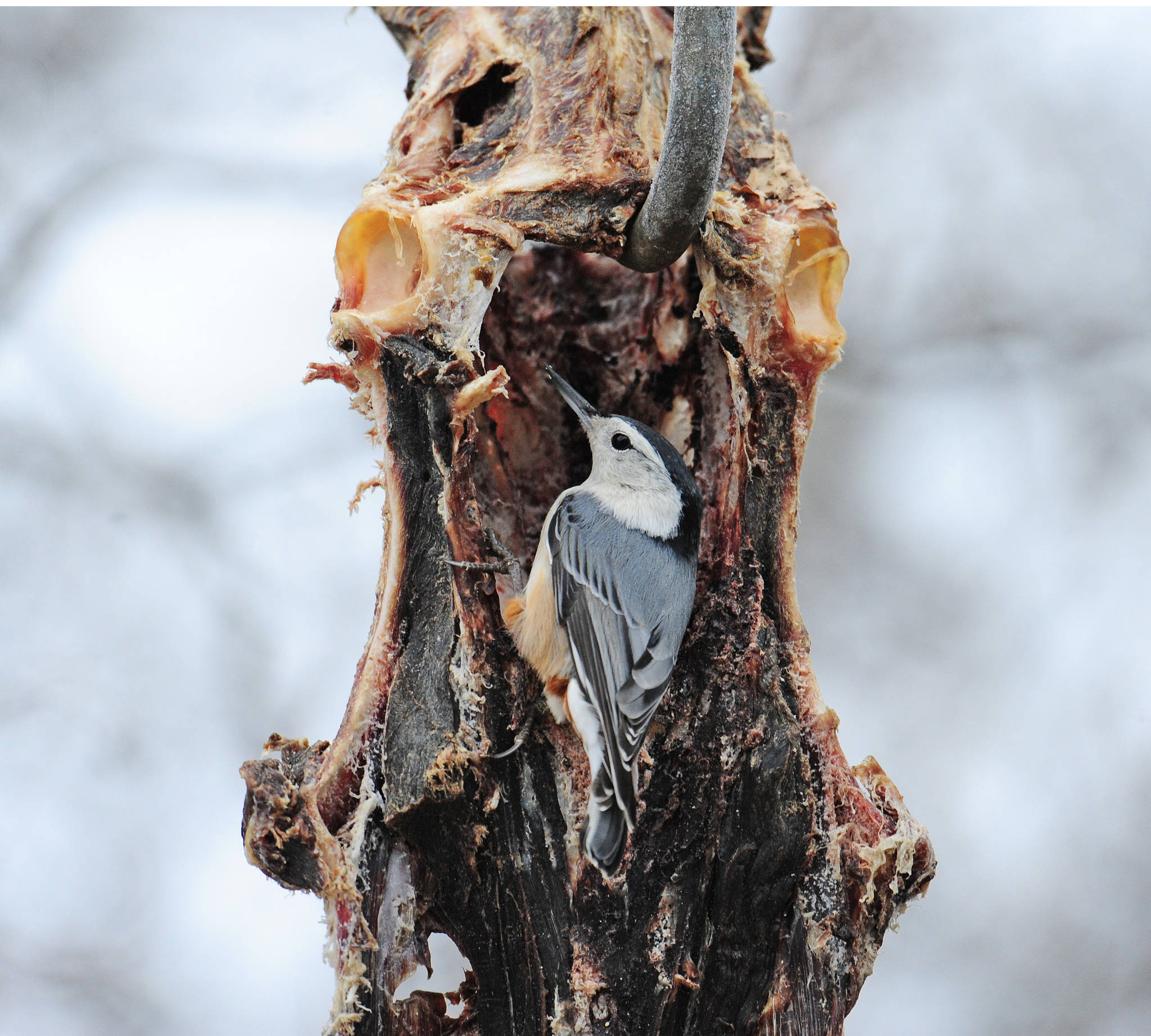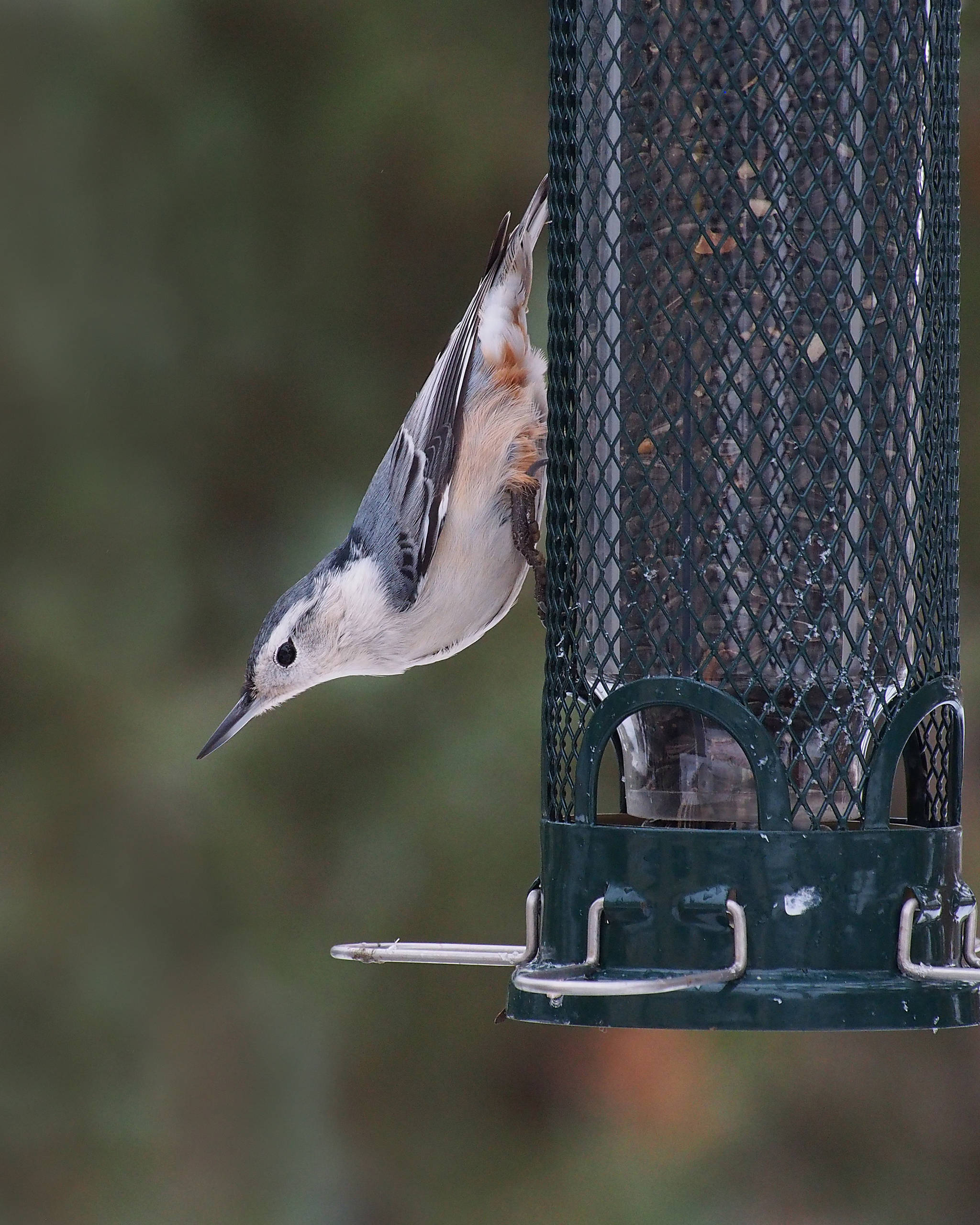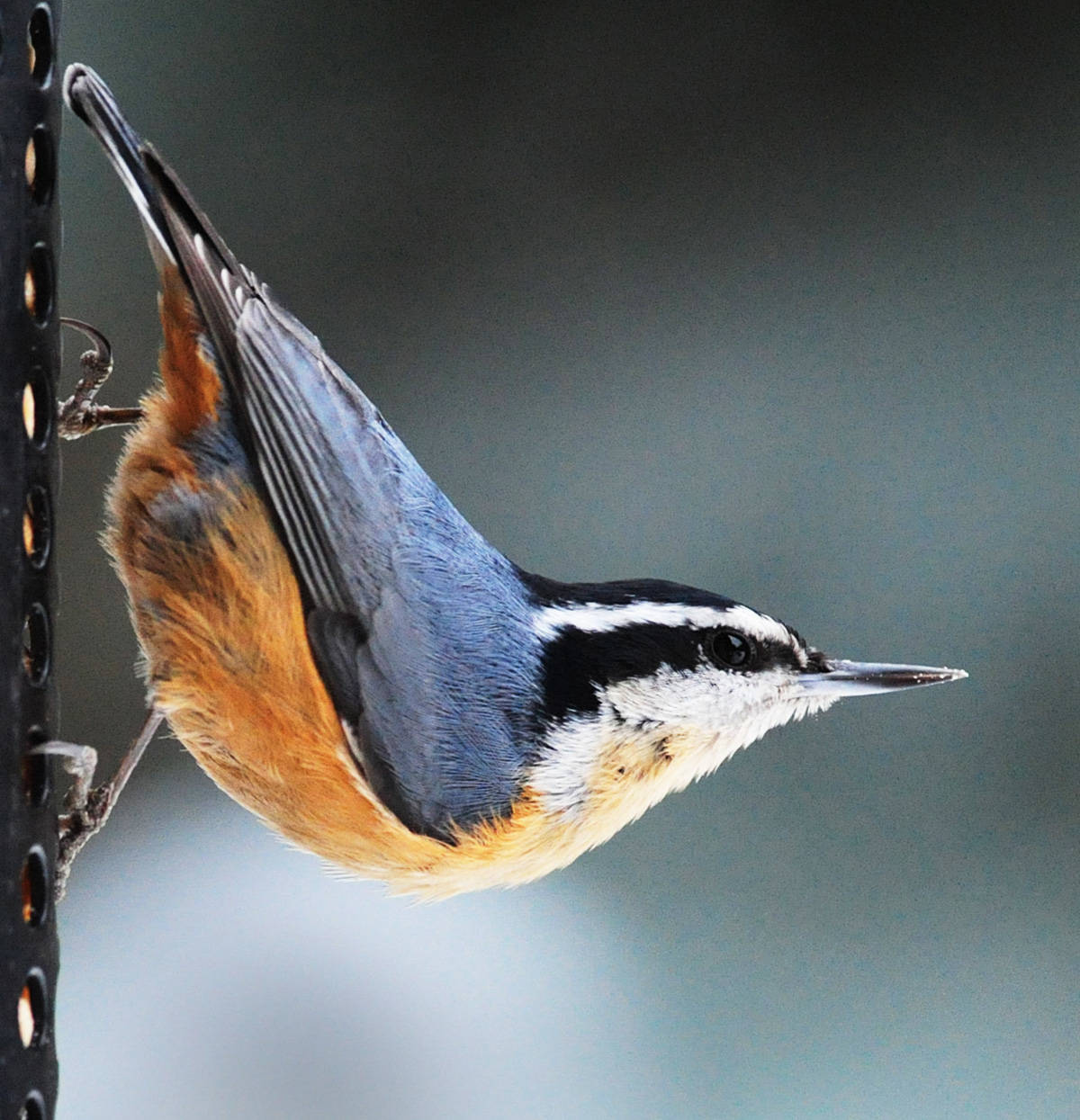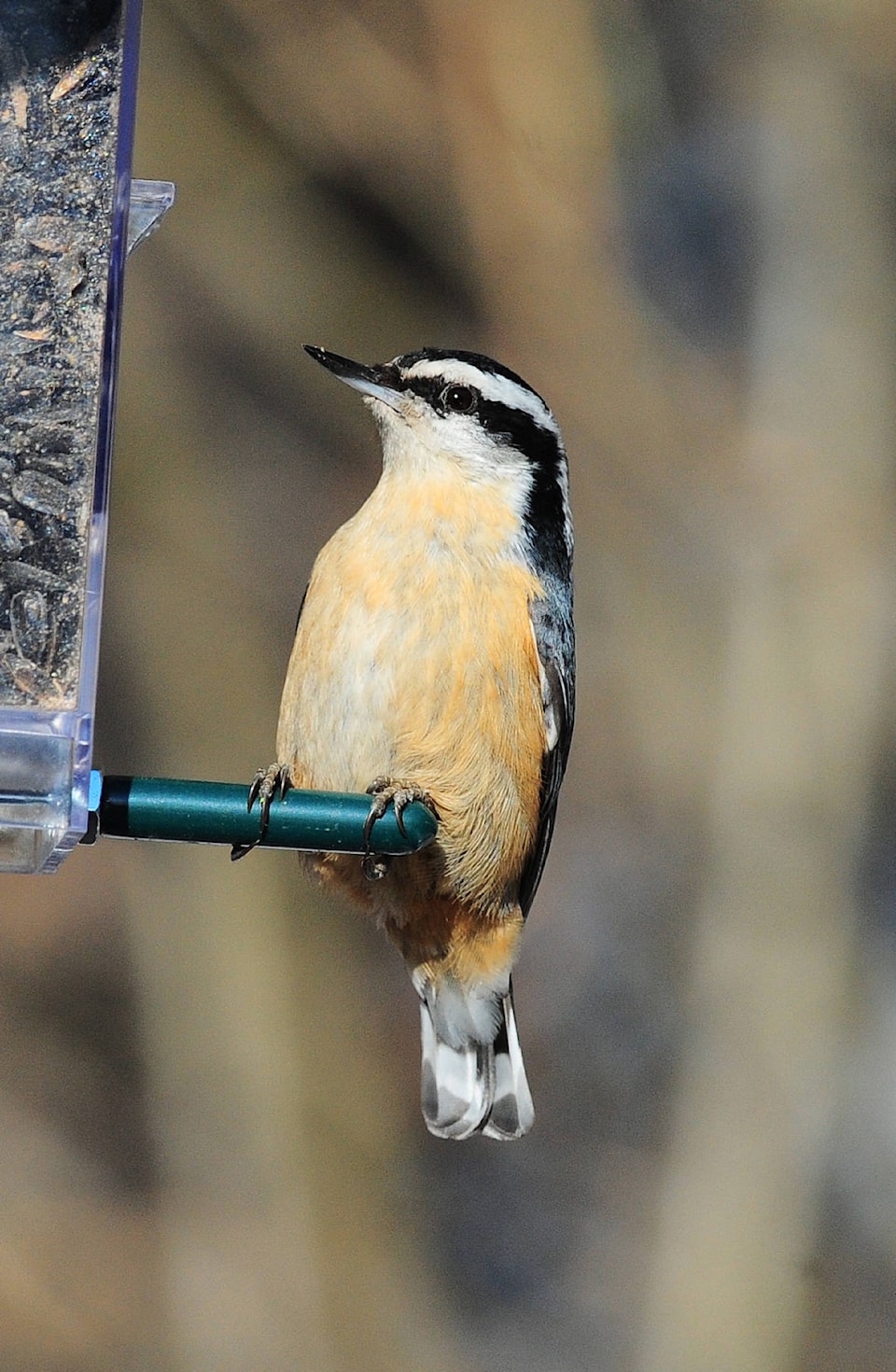Two bird species that many of us enjoy watching at our backyard feeders are cousins: the Red-breasted Nuthatch and the White-breasted Nuthatch.
Along with chickadees, these tough little year-round residents liven up even the coldest winter day.
Nuthatches have the unusual claim of being able to view the world upside down. They tend to fly to the top of a tree, then work their way down, searching nooks and crannies for insects, spiders and other morsels.
Unlike woodpeckers, they do not use their tails for balance; they cling to the bark with only their feet.
The name nuthatch is derived from “nut-hack,” a reference to the nuthatches’ habit of wedging a nut or sunflower seed into a bark crevice and then hacking at it with repeated blows from their bill until it opens.
This method is necessary since they do not have beaks that are large or strong enough to crush seeds.
The Red-breasted Nuthatch is the smaller of the two species and has, as its name suggests, a reddish breast.
Although it is found across most of the province, this species tends to be more restricted to habitats that are dominated by spruce and pine trees. Its repeated nasal “yank, yank, yank” is very distinctive.
Red-breasted Nuthatches tend to remain in their breeding area year-round, while the juveniles migrate south for the winter, returning again in April, often in the company of early migrating warblers.
In years of low cone production, adults may also move southward, along with crossbills and other birds that depend on cone crops.
The larger, southern-dwelling White-breasted Nuthatch is restricted to the parkland regions of the province and is more commonly found in areas dominated by mature deciduous or mixed-wood forests.
Like the Red-breasted Nuthatch, its call is distinctive, sounding more like a nasal “whah, whah, whah.”
Pairs remain together in their nesting territory all year and are thought to mate for life. While they are permanent residents in Alberta, large numbers of White-breasted Nuthatches may — for reasons unknown — occasionally move south.
Like many of the birds that overwinter in northern climates, nuthatches cache excess food by stuffing it into bark crevices or other hiding places. This behaviour can be easily observed, as they will come into a feeding station, grab a seed and dart off to a nearby tree, where they will jam it into a crevice.
Caching behaviour is like an avian insurance policy — they don’t always remember all the locations where they store the food, but sooner or later, they (or another bird) will happen upon it.
I have watched this caching behaviour on many occasions and have also observed that nuthatches are expert pilferers.
Pilferers watch where another bird caches food, then, when the cacher leaves, fly over to the spot and gobble down the easy meal. Interestingly, recent research indicates that male White-breasted Nuthatches are expert pilferers, especially adept at stealing food that has just been cached by a female nuthatch.
In response to this habit, female nuthatches have been found to wait for about 30 seconds after a male has departed on his caching flight before she flies off. Not only does she depart later, she heads out in the opposite direction, apparently in a further effort to throw him off her trail.
Lucky for bird feeding enthusiasts, both these species are attracted to backyard bird feeding stations that offer chopped nuts, shelled peanuts, sunflower seeds (especially shelled), suet and suet mixtures.
Myrna Pearman is the biologist at Ellis Bird Farm. She can be contacted at mpearman@ellisbirdfarm.ca



